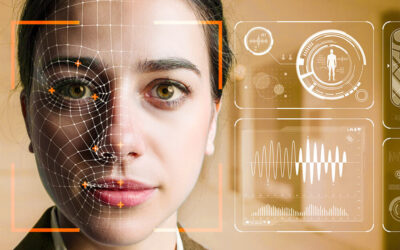Most of the time we are unaware. Our lives are full of commitments, physical and virtual appointments, professional and leisure activities, but even if we talk about it sometimes, we don’t seem to care, it seems normal to us and, except a few voices outside the choir, we have all, more or less consciously, accepted it.
What?
The fact that almost every one of our movements and actions, even thoughts and emotions, are tracked and are the fuel for machine learning (ML) algorithms that process Big Data for predictive purposes. These algorithms advise us which book to buy, which film to watch on TV in the evening, the best trip that should match our preferences.
We are all, or almost all, interconnected and observed through social networks, credit cards, loyalty cards and so on. Everyday Peta bytes of data (giga by giga) are stored and processed by artificial intelligences (AI) in different forms, to obtain commercially valuable information.
As with any self-respecting disruptive technology, ML also has its downside. Initial considerations seem to disconcert us, but this technology also has positive aspects underlying various activities and care services that are often very useful or even life-saving.
In the commercial sphere, the possibility of processing real data, free from the emotional influences that every living being has, produces information that can be used to improve products and services. The amount of data that needs to be processed in order to make a forecast as useful as possible, such as a weather forecast, is too great to be delegated, and at a speed unthinkable for a human being.
Before going into the details, it must be remembered that, at least for the moment, the prediction of the behaviour of the single individual is still an arduous undertaking also by the ML, while the elaboration of the Big Data produces effective results on the behaviour of the masses. However, such elaborations are always to be interpreted as statistical predictive information dependent on the quality of the incoming data.
An extremely positive example is the processing of the human genome (DNA) for preventive purposes in the medical field. Therefore, ML should be regarded as a technique that supports classical analytical methods and not as a complete replacement of them.
Sceptics will soon have to reconsider the results obtained in just a few years of using these technologies. Considering that the increase in reliability of results is exponential.
The world of ML is truly vast. Topics like Deep Learning, Neural Networks, Cognitive Computing, Natural Language Processing, are increasingly topical and so complex that not all aspects and potentialities of everyday applications are well understood, except by technical experts.
Can the result of this race to computerise processes lead to the replacement of humans? Many times, in the past, people have been led to believe that AI would completely replace human activities, but as we have seen, this has not happened, at least so far. We can all affirm computers can process huge amounts of information, in a short time, activities that do not succeed very well to the human being, but the latter is still needed to verify the data obtained.
We can identify three classes of ML based on the various methods of learning and data processing.
SUPERVISED LEARNING SL
This technique foresees that the algorithm takes an example from a predefined model of Input-Output, in order to process analogous tasks. SL applies a label to a certain input information. The machine learns from examples defined by the programmer, that is the human being is instrumental in defining how to process the information. All input data are labelled with corresponding output data.
Major applications of SL are fraud prevention on the Internet, text and image recognition; predictive maintenance of appliances and machines; promotional activities for food products, insurance and banking services.
In some cases, it is possible to define Semi-Supervised Learning, where not all input data are related to output data, some of which are left to the discretion of the algorithm. In this field we find automatic translators and web page cataloguing.
UNSUPERVISED LEARNING UL
This algorithm does not rigidly bind input data with output data. Just as humans make decisions based on their own experience, UL learns from observing information as it increases or varies, increasing the effectiveness and quality of the response. An example is having a list of 100,000 animals and having to group them by physical and behavioural characteristics or rather DNA. Algorithms using UL can provide us with interesting and perhaps even unexpected data.
Applications in this field are the elaboration of personal profiles based on potential expectations and the selection of products based on research and previous purchases.
REINFORCED LEARNING RL
Unlike other frameworks, RL processes data without assigning labels, but with the aim of finding the best operations in sequence to obtain the best result at that particular time, that is dynamically. This method learns by trial and error, i.e. a technique similar to research centres and their researchers. Navigation systems work with these concepts. To give an example, ants also naturally use these ‘algorithms’. The greater the number of ants that travel a certain route to find food, the greater the pheromone left on the route and the more ants will follow it.
RL is an extremely powerful tool for solving difficult problems, and although it has not yet reached its zenith, it is considered to be the best computing method in the future for processing complex systems.
Here we are in the areas of robotics, navigation systems and gaming.
For those who want to delve into this topic, I recommend the following readings.








0 Comments